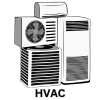Shock absorbers come in various types depending on their construction, working fluid, and use case. Here’s a detailed breakdown of the major types:

In this article:
1. Hydraulic (Oil-Filled) Shock Absorber
Description:
- Uses oil as the damping medium.
- As the suspension moves, oil flows through valves in the piston, creating resistance.
Pros:
- Simple design
- Cost-effective
- Common in older and economy vehicles
Cons:
- Prone to aeration (foaming), which reduces effectiveness
- Less responsive under heavy load
2. Gas-Filled (Gas-Charged) Shock Absorber
Description:
- Similar to hydraulic shocks, but includes nitrogen gas to reduce oil foaming.
- Usually monotube or twin-tube with pressurized gas.
Pros:
- Improved performance and durability
- More consistent damping
- Better suited for high-speed or off-road use
Cons:
- More expensive than hydraulic shocks
3. Twin-Tube Shock Absorber
Description:
- Has two cylinders: an inner working tube and an outer reservoir.
- Oil moves between tubes during compression and rebound.
Types:
- Basic twin-tube
- Gas-charged twin-tube
- Position-sensitive damping (PSD)
Pros:
- Comfortable ride
- Good for daily driving
Cons:
- Can overheat under hard use
- Not as precise as monotube designs
4. Monotube Shock Absorber
Description:
- Has a single tube with a piston and gas chamber separated by a floating piston.
- Offers better heat dissipation and quicker response.
Pros:
- High performance
- Better cooling and consistency
- Can be mounted upside down
Cons:
- Harsher ride on rough roads
- More expensive
5. Coil over Shock Absorber
Description:
- Combines a shock absorber and coil spring in one unit.
- Often adjustable in height and damping (used in racing and performance tuning).
Pros:
- Customizable ride height and stiffness
- Excellent handling and responsiveness
Cons:
- Expensive
- Requires professional setup
6. Adjustable Shock Absorber
Description:
- Damping force can be adjusted manually or electronically.
- Common in sports cars or adaptive suspensions.
Types:
- Manually adjustable (dial or knob)
- Electronically adjustable (via onboard sensors)
Pros:
- Adaptable to road conditions or driving style
- Can switch between comfort and sport modes
Cons:
- Higher complexity and cost
- More prone to failure if electronic
7. Air Shock Absorber
Description:
- Uses air pressure instead of a spring to support vehicle weight.
- Can automatically adjust ride height and stiffness.
Pros:
- Smooth ride
- Load leveling and height adjustment
- Common in luxury and SUV applications
Cons:
- Expensive to maintain
- Can leak or fail with age
8. Magnetorheological / Electronic Dampers
Description:
- Use a magnetic field to change the viscosity of special fluid in real-time.
- Found in modern performance or luxury cars (e.g., GM’s Magnetic Ride Control).
Pros:
- Lightning-fast adjustments
- Seamless transition between soft and firm
Cons:
- Very expensive
- Proprietary tech (hard to repair/replace)
Comparison Table:
| Type | Ride Comfort | Performance | Cost | Adjustable? |
|---|---|---|---|---|
| Hydraulic | ✅✅✅ | ❌❌ | 💰 | ❌ |
| Gas-Charged | ✅✅ | ✅✅ | 💰💰 | ❌ |
| Twin-Tube | ✅✅✅ | ✅ | 💰 | Some models |
| Monotube | ✅ | ✅✅✅ | 💰💰 | Some models |
| Coilover | ❌ to ✅✅ | ✅✅✅ | 💰💰💰 | ✅ |
| Adjustable | ✅✅ | ✅✅ | 💰💰💰 | ✅✅ |
| Air Shock | ✅✅✅ | ✅ | 💰💰💰 | ✅ |
| Magnetic Fluid | ✅✅✅ | ✅✅✅ | 💰💰💰💰 | ✅✅✅ |
Other courses:



